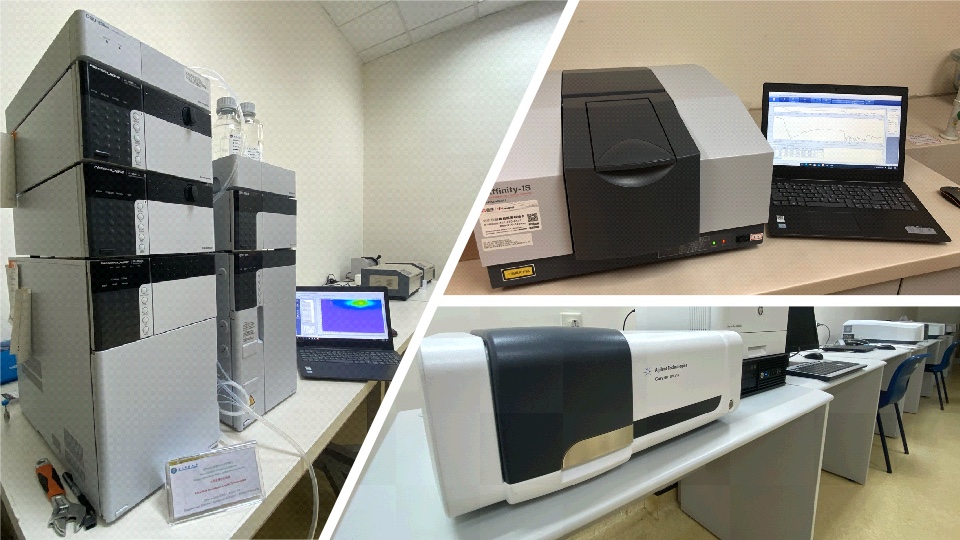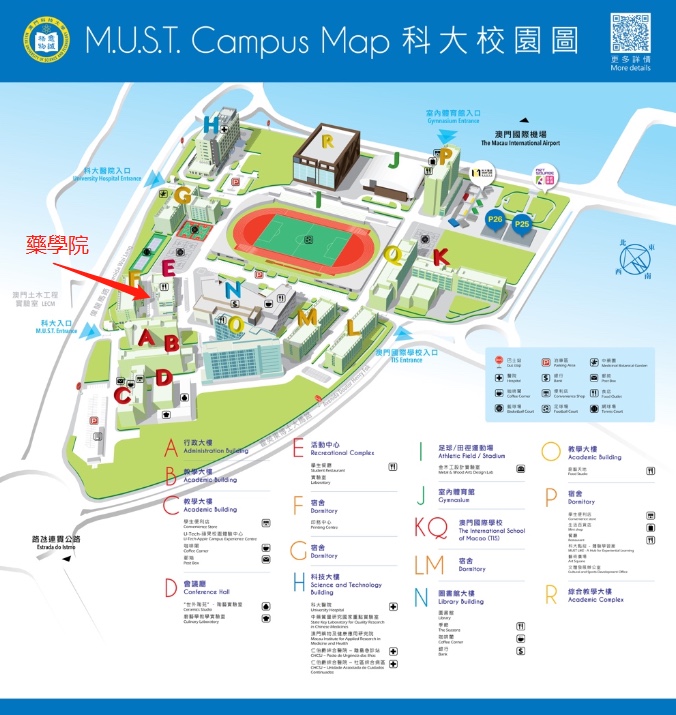macau university of science and technology
teaching laboratory, faculty of pharmaceutical sciences
introduction
the laboratories of the faculty of pharmacy of the macau university of science and technology (must) include the physiology and pathology computer simulation laboratory, anatomy and physiology and pharmacology laboratory, pharmacy simulation laboratory, pharmacy comprehensive laboratory, integrated chemistry laboratory, instrumental analysis laboratory, and bio-medical comprehensive laboratory, etc. these laboratories are used to carry out the experimental teaching of the undergraduate courses in pharmacy, masters' courses, doctoral courses, and so on. at the same time, we also make use of the advanced equipment of the professional laboratories of the state key laboratory for quality research of chinese medicines (https://www.must.edu.mo/en/skl/yqsb) to carry out experimental teaching in the subjects of drug analysis, pharmacology and pharmacy.
pharmacy is a highly practical subject, which not only focuses on the education of theoretical knowledge, but also on the cultivation of students' practical ability. the establishment of pharmacy teaching laboratories provides students with a learning platform for personal experience, skills training, while deepening the understanding of theoretical knowledge, so as to initially form the operational skills necessary for the practice of pharmacy, in order to lay a solid foundation for the next step into the hospitals, pharmaceutical factories and research institutes to carry out clinical internships, graduation internships and thematic research internships.
anatomy, physiology and pharmacology laboratory
human anatomy, physiology, pharmacology and pathology are all functional disciplines, which are quite similar in terms of research content, experimental methods and equipment, etc. the laboratory is mainly used for experiments in these disciplines.
at present, the teaching laboratories are equipped with multimedia teaching facilities, fully utilizing the advantages of computer-assisted instruction (cai) and multimedia teaching to promote the improvement of the standard of experimental teaching, the equipment includes orthogonal electron microscope, advanced binocular microscope, and histology and embryology models, laying a good foundation of scientific research for the future clinical work of the students, the morphology laboratories of the university of medical sciences and faculty training plays an important role. the morphology laboratory plays an important role in the training of our medical students and faculty. systematic anatomy enables medical students to master the normal morphological and structural characteristics of the human body organs and systems, their location and proximity, growth and development patterns and their functional significance, to correctly understand the physiological and pathological development process of the human body, to judge the normal and abnormalities of the human body and to differentiate between the physiological and pathological states, so as to carry out the correct diagnosis and treatment of diseases. at present, the laboratory has 134 human specimens and human models of various systems.
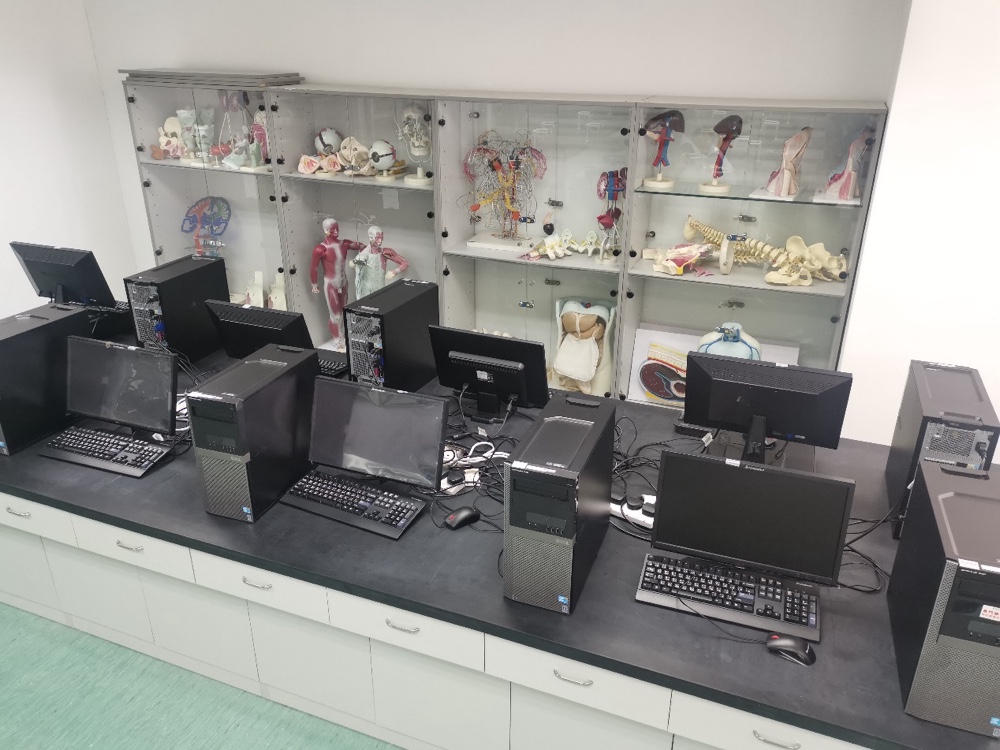
computational simulation laboratory for physiology and pathology
with the rapid development of life science and computer technology, virtual technology has been gradually extended to the medical field. virtual human body research is becoming a challenging and hot topic in the medical field. computer modeling and human-computer interaction can be used to simulate various complex physiological, pathological, and pharmacological processes from subcellular, cellular, tissue, and organ structures, thus helping people to improve their understanding of heart function and internal mechanisms. at the same time, it can also provide a fast, effective and accurate environment to simulate the life activities of the real heart, thus playing a great role in assisting clinical diagnosis, treatment and surgery, and accelerating the development of new drugs and other fields.
the specimens have different degrees of wear and tear during long-term use. in order to solve the problem of insufficient specimen resources and expand teaching equipment, a total of 40 sets of ect digital human anatomy system v3.0 and digital human virtual simulation teaching system v5.0 were purchased in 2019. among them, ect digital human anatomy system v3.0 is a 3d reconstruction of more than 5,000 anatomical structures using real data of chinese human body in continuous section without organic lesions and defects, with cross-sectional, coronal, and sagittal cross-sectional images, which can be zoomed in and out arbitrarily, and can also display all the organs and tissues of the body in the form of a full-fledged 3d model, and the system is set up with the functions of stripping, staining, and annotation. the system covers systematic anatomy, local anatomy, tomographic anatomy, etc., and more than 1700 corresponding ct and mri images are configured on the basis of tomographic specimen images. the digital human virtual simulation teaching system v5.0 includes 337 digital histology sections, 447 digital pathology sections, and 405 pathology gross specimens. all of these have realized the digital teaching mode of morphology, combining traditional teaching with digital teaching mode in a virtual and real way, greatly expanding and optimizing teaching resources.
in the area of drug screening, 30 sets of discovery studio™ 2021 software were purchased in 2019, which can perform molecular docking techniques to initially screen in suitable compounds, and can minimize the screening of a large number of drugs through experiments.
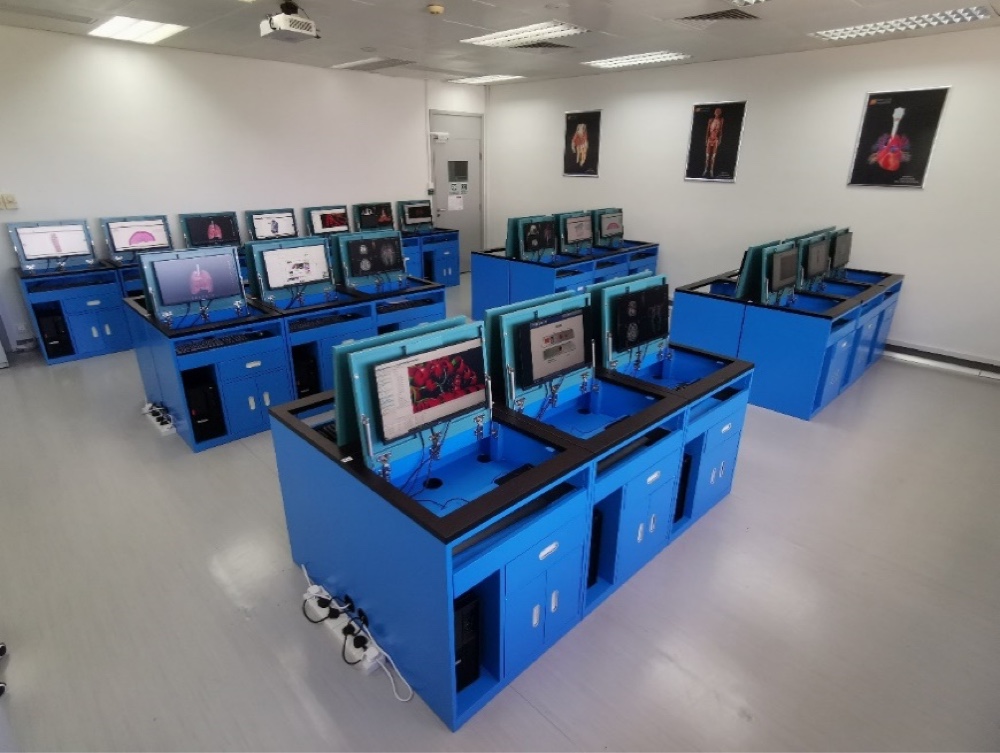
biomedical comprehensive laboratory
the biomedical comprehensive laboratory is responsible for applying biotechnology and other natural science theories to clinical practice. it conducts basic research in the field of life and health using a variety of research tools, such as biochemistry, cell biology, molecular biology, biophysics, genetics, bioinformatics, etc., in order to obtain a number of high-level original scientific research results and to promote the production of original, groundbreaking and world-leading scientific discoveries and technological innovations.
commonly used instruments include the bgiseq-500rs sequencer, which provides a one-stop sequencing operation process. with the optional fully automatic library preparation system and the bgidl-50 fully automatic sample loading system, the fastest turnaround time from dna to data analysis results can be shortened to less than 24 hours.
the abi pcr 96 well termal cycler features an easy-to-use color touch screen to simplify system setup and use. has independent temperature blocks for precise control of pcr optimization. provides flexible settings for rapid pcr or standard pcr methods to reduce pcr time.
the nanodrop one detects nucleic acids and proteins in a single sample. only 1 µl of sample is required for characterization and quantification, and the bio-rad universal hood ii uv gel imager allows visualization of dna expression and size under specific filters.
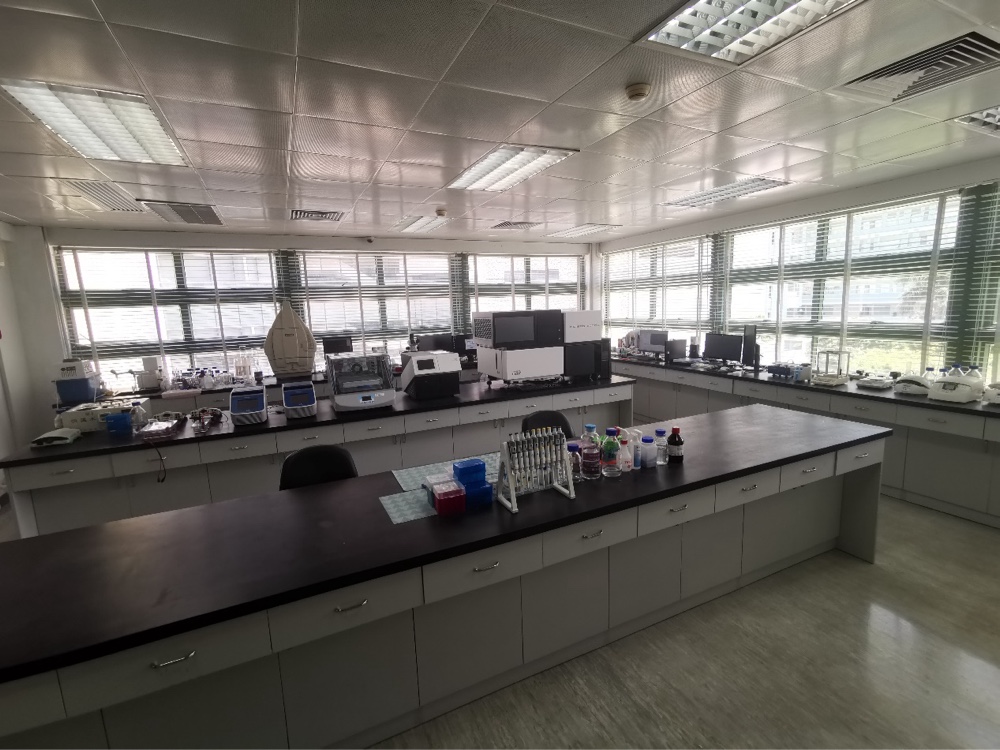
integrated chemical laboratory
comprehensive chemistry laboratory for undergraduate students to provide "basic chemistry", "basic pharmaceutical chemistry", "analytical chemistry", "pharmaceutical chemistry" and "drug analysis" of the five chemical laboratory courses. the main purpose is to enable undergraduates to have a deep understanding of chemistry laboratory, not just stay in the theory class, only through hands-on, can have twice the effect with half the effort, but also for the "pharmacy internship iii" to lay a good foundation.
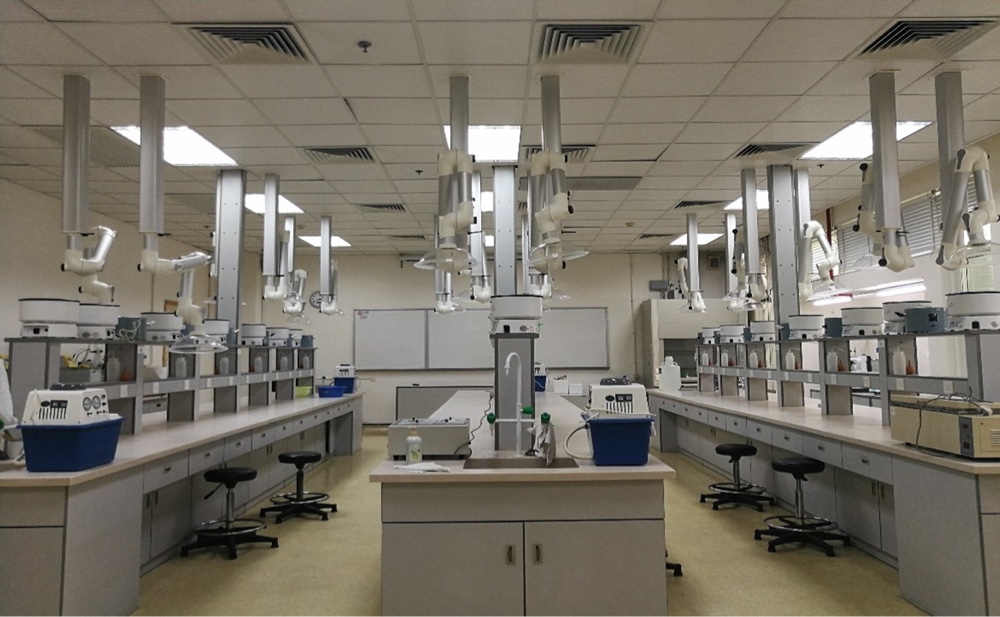
integrated pharmacy laboratory
the integrated pharmacy laboratory enables students to understand the traditional processes and quality standards of pharmacy, such as the production of tablets, suppositories and capsules, the processing of raw materials into tablets, and the use of disintegrators, hardness testers, friability, and bulk density measurement instruments to check whether the tablets are of acceptable quality.
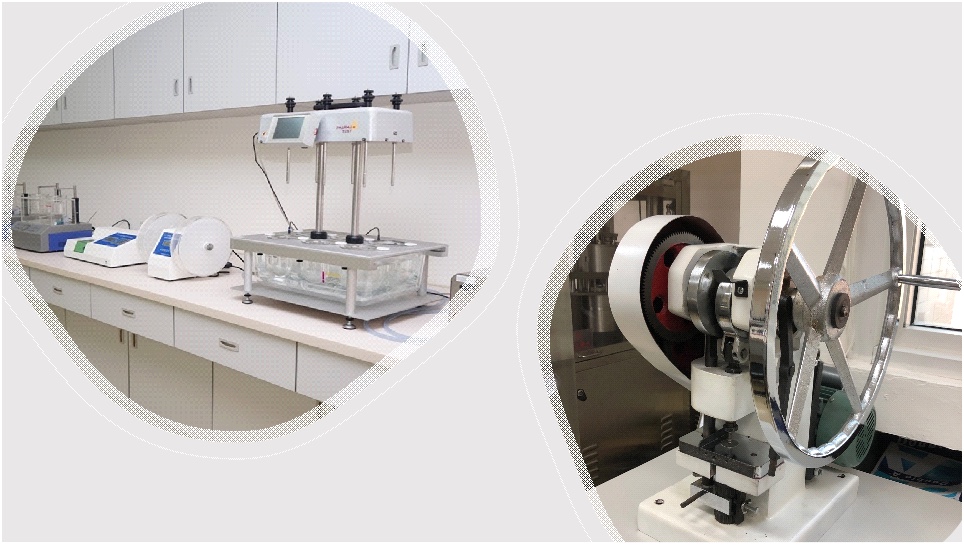
instrumental analysis laboratory
the instrumental analysis laboratory is able to provide undergraduate pharmacy students with the ability to analyze drugs containing a large number of medicinal ingredients, ultra performance liquid chromatography uplc, agilent 1290 infinity ⅱ lc system, to separate compounds qualitatively and quantitatively in a micro-volume system. in different chemistry laboratory courses, students can have a deeper understanding of this direction and deepen their impression of this subject by operating the instruments themselves under the guidance of teachers and technicians. the laboratory also has a uv-vis spectrophotometer, fourier-transform infrared spectroscopy (ftir) is a technique used to obtain infrared absorption and emission spectra of solids, liquids or gases. agilent aas 280fs aa flame atomic absorption spectrometer can be used to the agilent aas 280fs aa flame atomic absorption spectrometer can be used to detect the heavy metal content of traditional chinese medicine.
